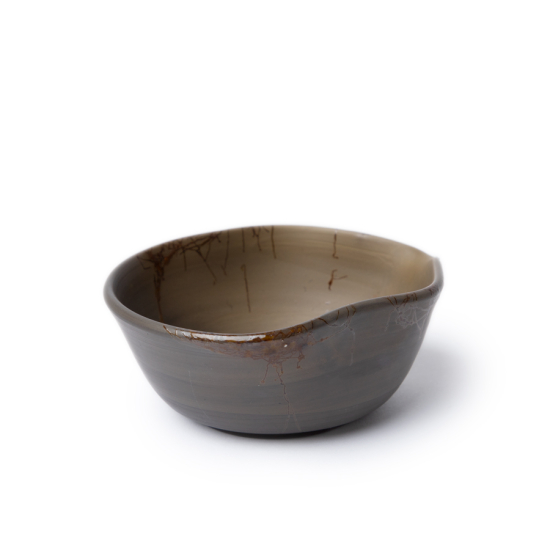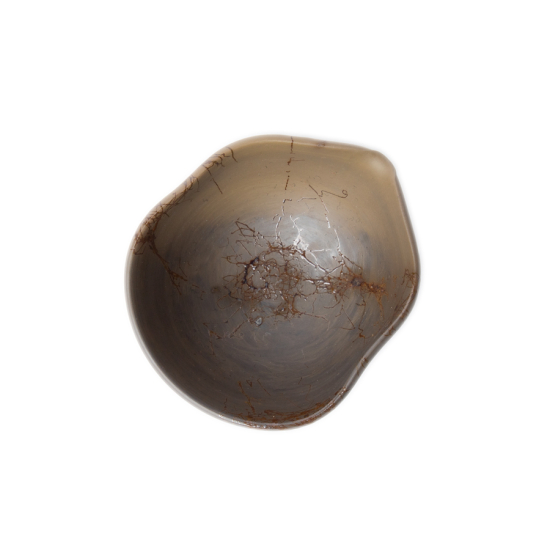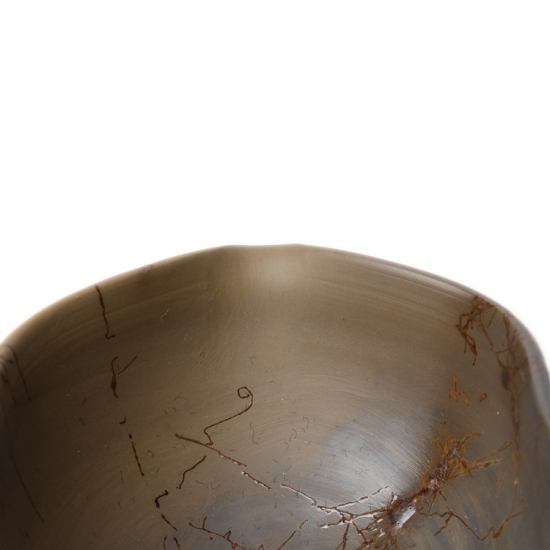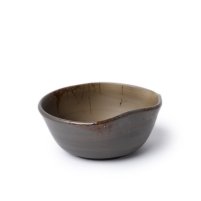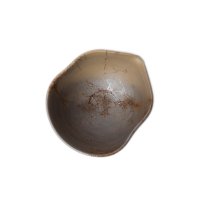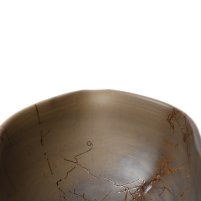As with all unglazed ceramics, wash with warm water and a soft cloth only. Do not use washing-up liquid or put in the dishwasher. Pat dry with a towel and/or leave to air dry naturally. Hard water may cause limescale deposits to develop, in which case rinse the Yuzamashi with soft bottled water, then wipe with a soft cloth.
Yuzamashi
Tokoname Mogake
Hakusan
SKU
4125
Yoshi En has recently grown out of Sunday Natural to become an independent premium tea store. As part of this transition, some products may still be shipped in Sunday Natural packaging.
Beautiful Yuzamashi cooling bowl handcrafted by Hakusan Katayama III (b.1949) with his speciality Mogake seaweed patterning and a fetching green to black Yohen colour gradient. Perfect for preparing Gyokuro and Kabusecha that require a lower brewing temperature, as well as pairing with the matching Shiboridashi.
| Product | Yuzamashi water cooler, green |
| Origin | Tokoname, Aichi, Japan |
| Maker | Hakusan 白山 |
| Volume | 120ml |
| Dimensions | Ø9 x 4.5cm |
| Weight | 85g |
| Material | Ceramic |
| Finish | Unglazed (Yakishime 焼き締め ) |
| Decoration | Ombré (Yōhen 窯変 ), Mogake (藻掛け "seaweed wrapped") |
| Production | Potter's wheel (Rokuro 轆轤 ) |
| Artist mark | Signature on base |
| Packaging | Cardboard box |
Each piece is handmade and unique, therefore colour, volume, dimensions and weight may vary slightly
In stock



